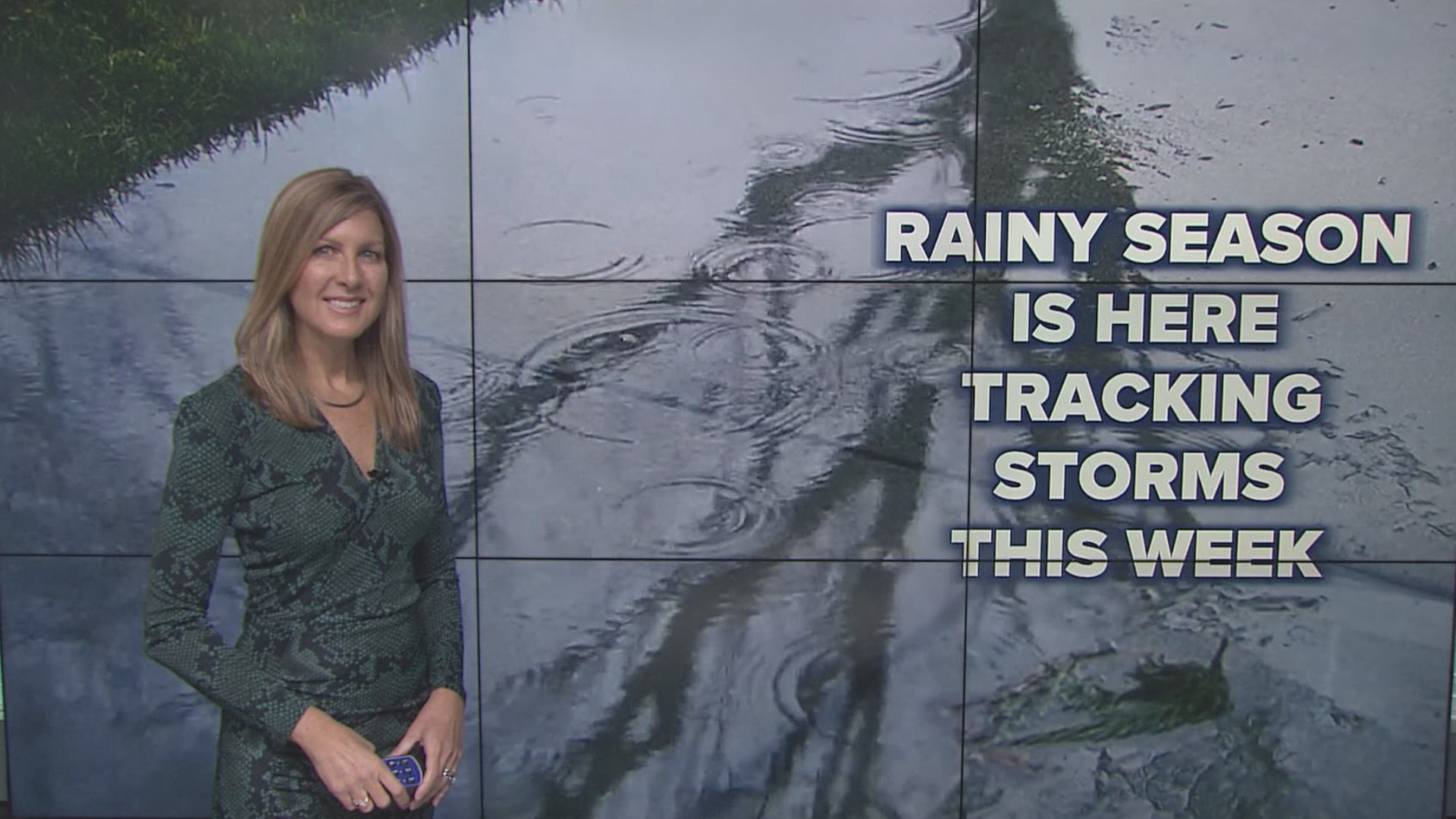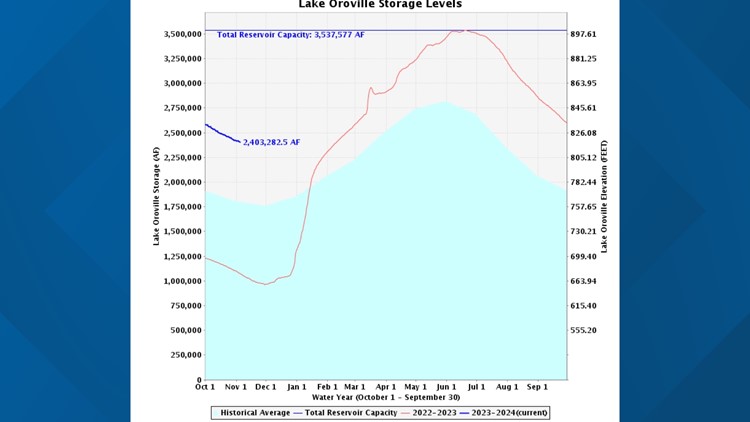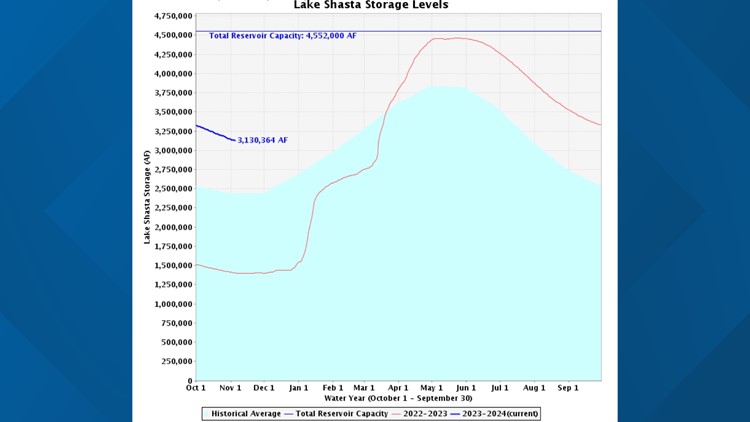SACRAMENTO, California —
California’s lakes and reservoirs remain in very good shape as an El Niño winter closes in.
Following the record wet winter, lakes and reservoirs were nearly full to the brim as the melting snowpack made its way into them.
After the melt-off period, Lake Shasta — the keystone of the Central Valley Project — was at 98% capacity, Oroville was at 100% capacity, and Folsom Lake was nearly full as well at 95% capacity. These bodies of water were quite parched heading into the winter due to the three years of drought preceding the past winter's deluge and ranged from 25-32% capacity before the atmospheric river events rolled in.
As of Nov. 12, Shasta is at 69% of capacity (128% of historical average), Oroville is at 68% (134% of historical average) and Folsom is 55% full (130% of historical average).
The capacity percentages have taken a bit of a hit as of late, which is normal considering Northern California's lakes and reservoirs are primarily fed by snowmelt and the snowmelt period ends in the late spring or early summer typically.
The graphs below reset at the start of the new water year on Oct. 1, and the steady decline since then is a typical feature for a water storage graph in Northern California.
Reservoir storage 11/6
The state remains in excellent standing regarding water storage thanks to two remarkably wet months, January and March, and drought has been entirely eliminated in California for the first time since February 2020.
With El Niño continuing to gain strength in the eastern Pacific, the odds are in favor of another wet winter for California. Also, with reservoir levels above average and the state heading into possibly another wet winter, the role that reservoirs play in flood control could prove vital.
While California has had a few minor storms this fall, it hasn't had a major snow producing storm system roll through yet.
Models are picking up on a major storm headed towards California next week, which would be a good start towards building another robust snowpack this winter.
WATCH MORE:

























